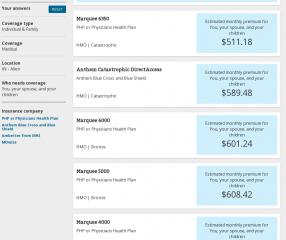 Over the next few days, I am pondering reading through and explaining the most significant highlights of Public Law 111-148, also known as the Patient Protection and Affordable Healthcare Act or H.R. 3590 March 23, 2010, or ObamaCare. The last time the American working class were brutalized with a financial atrocity of this magnitude was in October 1913, when, after two years of Republican opposition, the Democrat party forced the creation of the Personal Income tax, with the promise that only the rich would pay. Very similar conditions there. Since American workers already loose well over 50% of payroll as taxes — 35% Federal Income Tax, 3.5% or more State Income Tax, 2% or more Local Income Tax, 3% to 7.5% Unemployment Tax, 1.45% Medicare Tax, 1.45% “Employer” Medicare Tax, more for Medicaid tax, plus Sales tax, Restaurant Tax (every time you eat out), gasoline taxes — this is of some concern.
Over the next few days, I am pondering reading through and explaining the most significant highlights of Public Law 111-148, also known as the Patient Protection and Affordable Healthcare Act or H.R. 3590 March 23, 2010, or ObamaCare. The last time the American working class were brutalized with a financial atrocity of this magnitude was in October 1913, when, after two years of Republican opposition, the Democrat party forced the creation of the Personal Income tax, with the promise that only the rich would pay. Very similar conditions there. Since American workers already loose well over 50% of payroll as taxes — 35% Federal Income Tax, 3.5% or more State Income Tax, 2% or more Local Income Tax, 3% to 7.5% Unemployment Tax, 1.45% Medicare Tax, 1.45% “Employer” Medicare Tax, more for Medicaid tax, plus Sales tax, Restaurant Tax (every time you eat out), gasoline taxes — this is of some concern.
I feel this is important at this time because of current political activity and the potentially lethal consequences for large numbers of middle-income and poor people, and because no one else is revealing to the public what this law actually contains. There are several difficulties with this, amendments aside for the moment, the most immediate of which is that there appear to be multiple, different, “official” texts of this Law.
One link to is http://beta.congress.gov/111/plaws/publ148/PLAW-111publ148.pdf with a similar link on Thomas (thomas.loc.gov). The notes on Public Law 111-148 atate:
H.R.4872 makes a number of health-related financing and revenue changes to this bill. Read together, this bill and the health care-related provisions of H.R.4872 are commonly referred to as the Affordable Care Act (ACA).
The only modifications published by the government are in http://beta.congress.gov/bill/111th/house-bill/4872/text H. R. 4972. The notes on HR4872 state:
The bill makes a number of health-related financing and revenue changes to the Patient Protection and Affordable Care Act enacted by H.R.3590 and modifies higher education assistance provisions. Read together, H.R.3590 and the health care-related provisions of this bill are commonly referred to as the Affordable Care Act (ACA).
The law is supposed to be 2,700 pages long, but the published PL111-148 is 906 pages, and the changes to it in HR4872 are 55 pages.
Another factor also occurs to me: has anyone considered the affect of PL 111-148 on the Roe vs. Wade decision? Roe vs. Wade did not “decide that abortion is legal” it decided that government cannot know of or interfere in a person’s healthcare decisions — those decisions are protected under US Constitution Amendment #14. So either 1. ObamaCare overrules Roe vs Wade or 2. Roe vs. Wade overrules ObamaCare. The two are diametrically opposed.
Roe v. Wade, 410 U.S. 113 (1973), is a landmark decision by the United States Supreme Court on the issue of abortion. Decided simultaneously with a companion case, Doe v. Bolton, the Court ruled 7–2 that a right toprivacy under the due process clause of the 14th Amendment extended to a woman’s (healthcare decisions, including abortion) http://en.wikipedia.org/wiki/Roe_vs_wade
This should place the pro-abortion lobby opposed to the pro-ObamaCare lobby, if of course, they are in fact promoting what they claim (women’s rights to privacy in their healthcare decisions vs. government oversight of healthcare decisions).
—
In the mean time, links: http://www.politico.com/obamacare-guide/ “Understanding ObamaCare” summary, and http://www.politico.com/p/pages/obamacare basically their De Rey ObamaCare with several articles by politico.com.
Email received October 21, 2013 from the White House
You can now preview plans and prices available in your area without filling out the online application.
https://www.healthcare.gov/find-premium-estimates/
You can find out, with an improved calculator, whether your income and household size may qualify you for lower costs on your monthly premiums and out-of-pocket costs.
https://www.healthcare.gov/how-do-i-apply-for-marketplace-coverage/
You can apply for coverage 4 ways: by phone, online, by mail with a paper application, or with the help of an in-person assister.